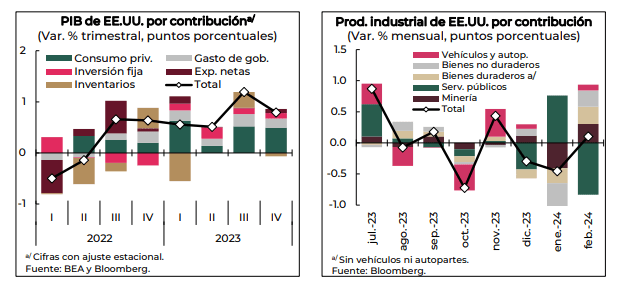Although a lower dynamism of the external sector is expected with respect to 2023, Mexico will benefit from the construction of manufacturing plants in the United States in 2024, projected the Ministry of Finance and Public Credit (SHCP).
According to its outlook, Mexico’s economic sectors with greater trade integration with the United States could benefit from the boost in foreign investment and manufacturing, which has seen an increase in the construction of manufacturing plants in and outside the United States.

Thus, between 2024 and 2025, new manufacturing plants will start operating at full capacity, which implies the creation of new value chains involving Mexican companies.
Manufacturing plants
By the end of 2024, the SHCP estimates that the growth of economic activity in Mexico will continue to perform well, driven by the performance of the domestic market, which will continue to benefit from the increase in employment and the permanent effects of spending on infrastructure and social protection.
Towards 2025, the growth estimate is maintained with respect to that published in the General Economic Policy Criteria 2024, in a range between 2.0 and 3.0 percent.
This projection considers a sustained growth of domestic demand, where employment and the household economy will make an important contribution to national growth.
In addition, new global trends in technology and trade, together with the new production chains generated by the relocation of companies, will allow Mexico to position itself in the global supply chain, benefiting both sectors traditionally integrated with the United States and new sectors that develop under the new paradigm.
Durable goods
Industrial production in the United States registered an annual growth of 0.2% in 2023, after having grown 3.4% in 2022.
This lower dynamism was explained by a 0.6% annual contraction in the manufacturing sector, which accounts for a 75.2% share of the total.
The items that contributed most to the decline in manufacturing were in the group of non-durable goods such as food, beverages and tobacco, chemicals and paper, which recorded annual declines of 2.2%, 4.5% and 6.6%, respectively.
While the production of durable goods slowed, important sectors such as wood products, machinery and furniture contracted with respect to the previous year.

